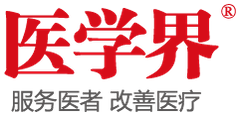95人浏览
0收藏
0次下载
With increasing numbers of patients needing intensive care or who are immunosuppressed, infections caused by moulds other than Aspergillus spp or Mucorales are increasing. Although antifungal prophylaxis has shown effectiveness in preventing many invasive fungal infections, selective pressure has caused an increase of breakthrough infections caused by Fusarium, Lomentospora, and Scedosporium species, as well as by dematiaceous moulds, Rasamsonia, Schizophyllum, Scopulariopsis, Paecilomyces, Penicillium, Talaromyces and Purpureocillium species. Guidance on the complex multidisciplinary management of infections caused by these pathogens has the potential to improve prognosis. Management routes depend on the availability of diagnostic and therapeutic options. The present recommendations are part of the One World—One Guideline initiative to incorporate regional differences in the epidemiology and management of rare mould infections. Experts from 24 countries contributed their knowledge and analysed published evidence on the diagnosis and treatment of rare mould infections. This consensus document intends to provide practical guidance in clinical decision making by engaging physicians and scientists involved in various aspects of clinical management. Moreover, we identify areas of uncertainty and constraints in optimising this management.








